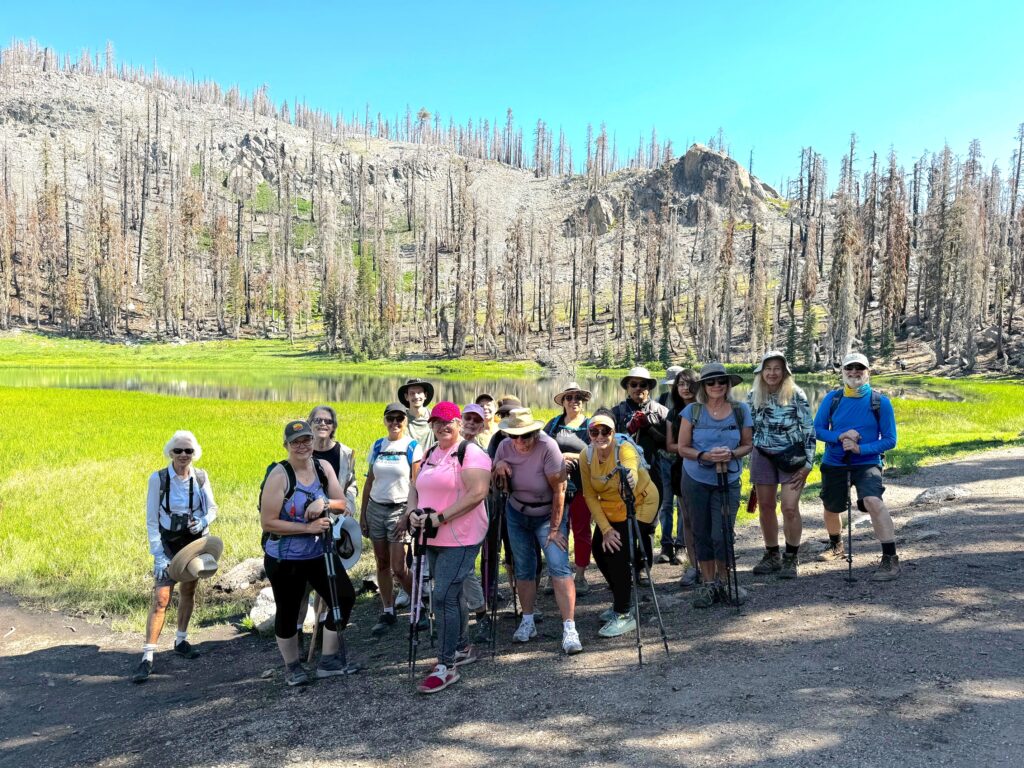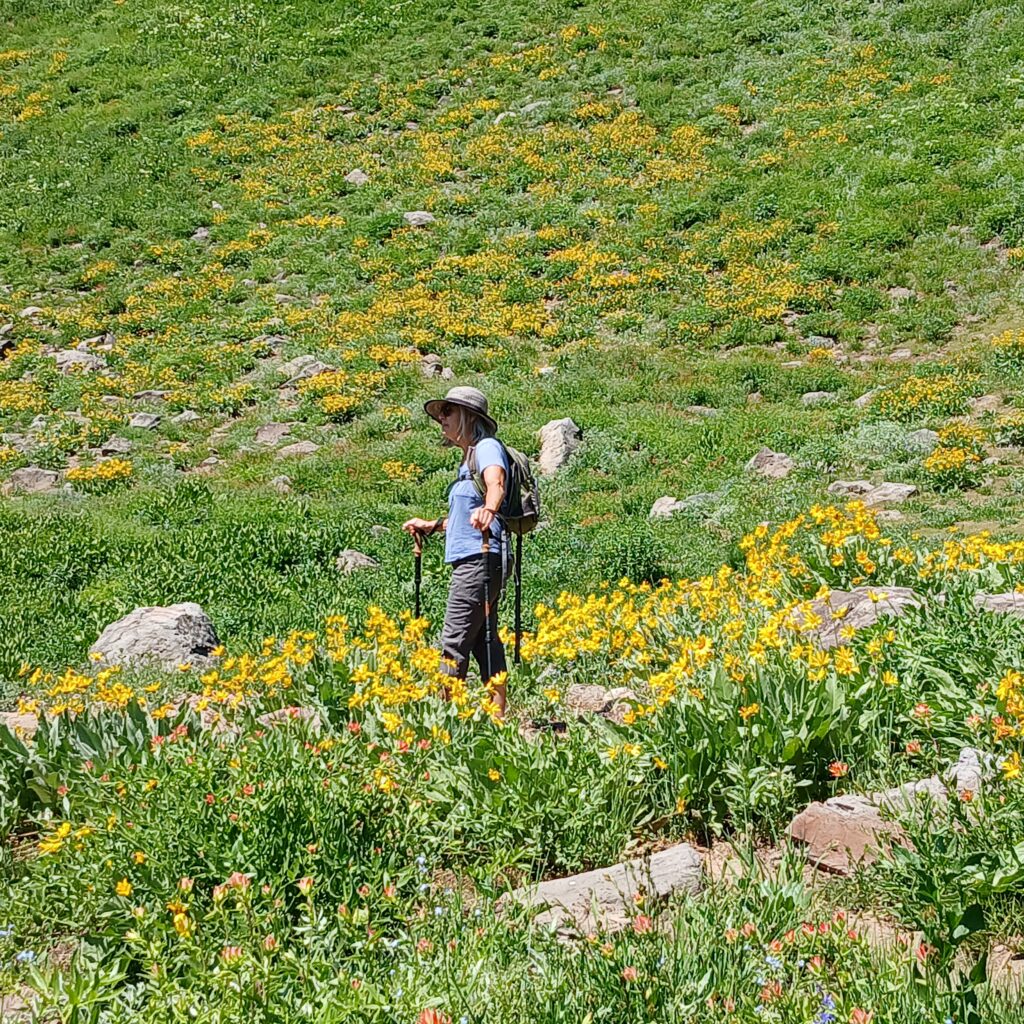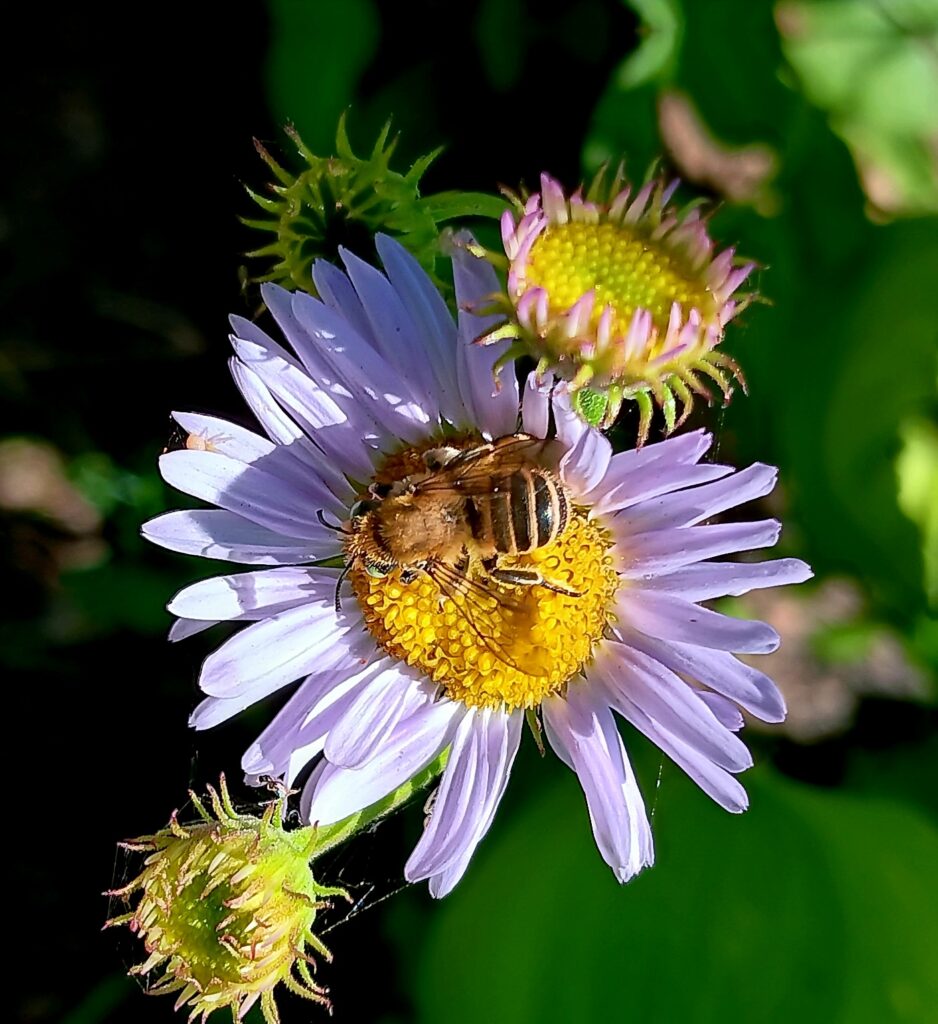
(Above) Photo by Haley Pratt
It reached a high of 115 degrees in Redding when CNPS and SEA led a field trip to Cold Boiling and Crumbaugh Lakes in Lassen Volcanic National Forest on Monday, July 8. Fortunately, it was cooler at 7300 feet, but it was still a warm 82.
The Dixie Fire had burned this area, so most of the shade was under dead trees, but there were still a few small groves of trees that survived. The fire did bring out a lot of wildflowers with an amazing diversity around Crumbaugh Lake, with one guidebook calling the north side of the lake that we walked on “one of the most extensive wildflower gardens in the park.”

(Above) Photo by Marti Weidert
After eating lunch surrounded by wildflowers at the lake, we walked about ½ mile past the lake in a burned forest before heading back, in all about an easy 3 ½ mile hike with only a 300’ elevation gain. The heat did get to one hiker who did not bring enough water, but after some of us shared our water with her, she revived and made it back to the trailhead. A reminder, always bring at least 1.5 liters of water on hot day hikes. It was about 82 degrees when we returned to our cars. We had 18 to 20 people show up, a pleasant and fun group. If you want to see a great diversity of wildflowers, take a hike to Crumbaugh Lake.The tree species at this high altitude were all conifers: red fir, mountain hemlock, lodgepole, and western white pine. Shrubs included: Brewer’s mountain heather (Phyllodoce breweri), pine mat manzanita (Arctostaphylos nevadensis) blue elderberry (Sambucus mexicanus); Herbs: Davis knotweed (Aconogonum davisiae), wandering fleabane (Erigeron gracialis), tiling’s monkeyflower (Erythranthe tilingii), small-flowered stickseed (Hackelia micrantha), western waterleaf (Hydrophylum occidentale), narrow flowered lupine (Lupinus angustiflora) satin lupine (Lupinus obtusilobus), arrowleaf groundsel (Senicio triangularis), California corn lily (Veratrum californicum)
(Below) Beautiful bee photo by Brigitte Robertson
